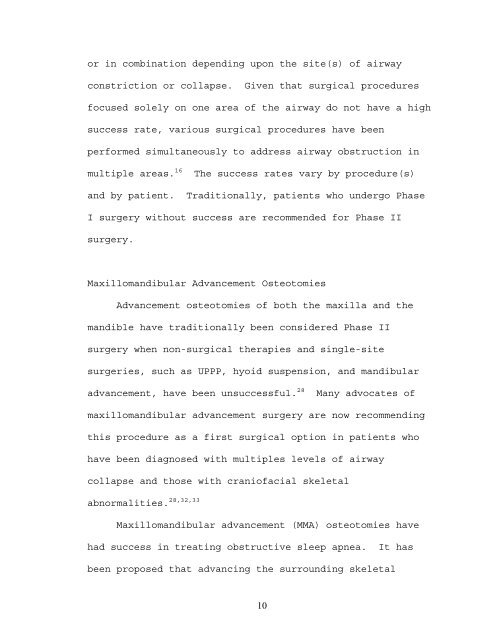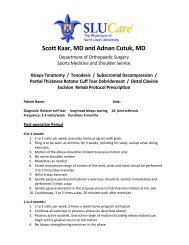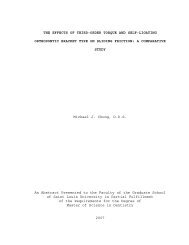PHARYNGEAL AIRWAY VOLUME FOLLOWING ...
PHARYNGEAL AIRWAY VOLUME FOLLOWING ...
PHARYNGEAL AIRWAY VOLUME FOLLOWING ...
You also want an ePaper? Increase the reach of your titles
YUMPU automatically turns print PDFs into web optimized ePapers that Google loves.
or in combination depending upon the site(s) of airway<br />
constriction or collapse. Given that surgical procedures<br />
focused solely on one area of the airway do not have a high<br />
success rate, various surgical procedures have been<br />
performed simultaneously to address airway obstruction in<br />
multiple areas. 16 The success rates vary by procedure(s)<br />
and by patient. Traditionally, patients who undergo Phase<br />
I surgery without success are recommended for Phase II<br />
surgery.<br />
Maxillomandibular Advancement Osteotomies<br />
Advancement osteotomies of both the maxilla and the<br />
mandible have traditionally been considered Phase II<br />
surgery when non-surgical therapies and single-site<br />
surgeries, such as UPPP, hyoid suspension, and mandibular<br />
advancement, have been unsuccessful. 28 Many advocates of<br />
maxillomandibular advancement surgery are now recommending<br />
this procedure as a first surgical option in patients who<br />
have been diagnosed with multiples levels of airway<br />
collapse and those with craniofacial skeletal<br />
abnormalities. 28,32,33<br />
Maxillomandibular advancement (MMA) osteotomies have<br />
had success in treating obstructive sleep apnea. It has<br />
been proposed that advancing the surrounding skeletal<br />
10

















